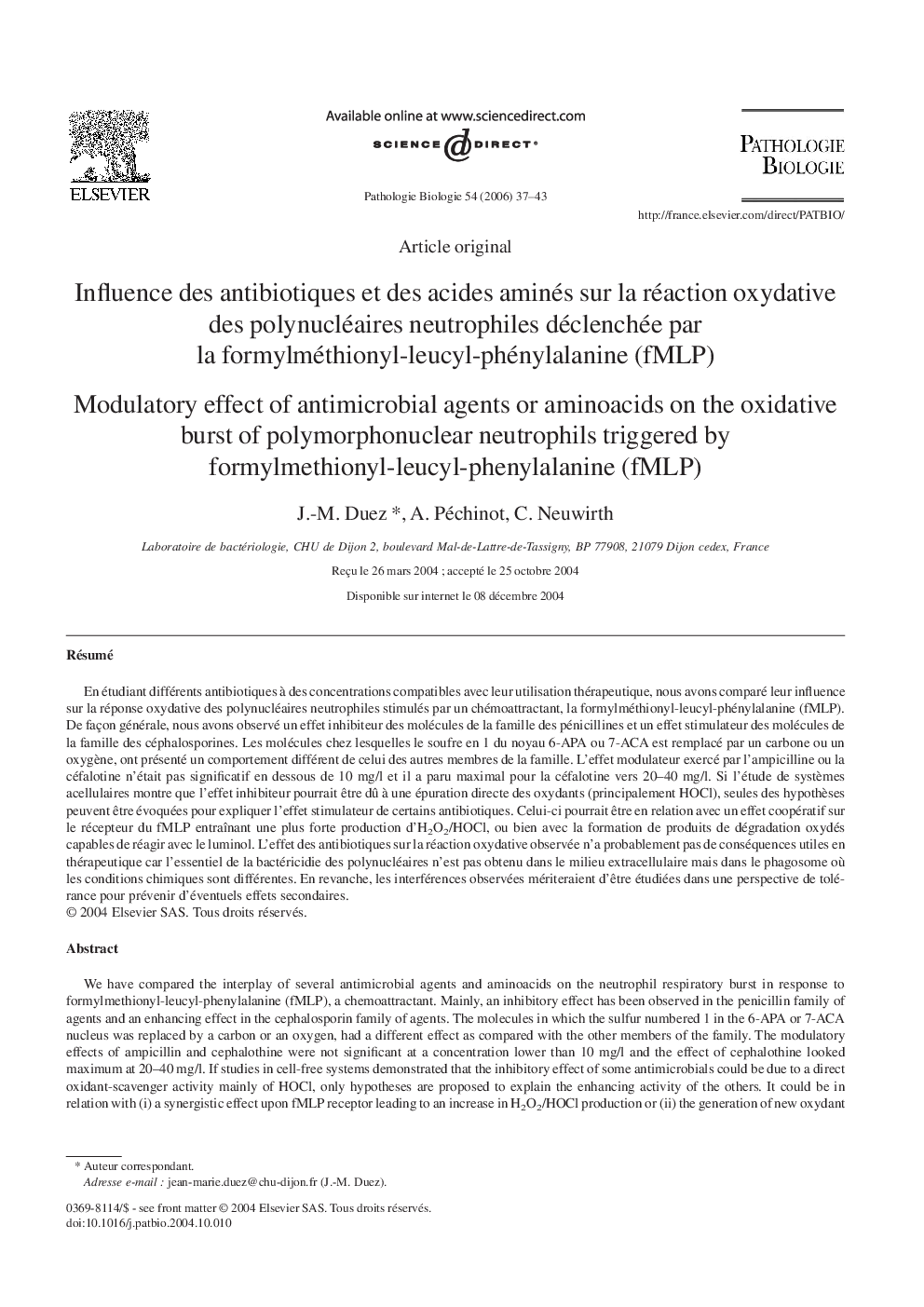| Article ID | Journal | Published Year | Pages | File Type |
|---|---|---|---|---|
| 4136919 | Pathologie Biologie | 2006 | 7 Pages |
Abstract
We have compared the interplay of several antimicrobial agents and aminoacids on the neutrophil respiratory burst in response to formylmethionyl-leucyl-phenylalanine (fMLP), a chemoattractant. Mainly, an inhibitory effect has been observed in the penicillin family of agents and an enhancing effect in the cephalosporin family of agents. The molecules in which the sulfur numbered 1 in the 6-APA or 7-ACA nucleus was replaced by a carbon or an oxygen, had a different effect as compared with the other members of the family. The modulatory effects of ampicillin and cephalothine were not significant at a concentration lower than 10 mg/l and the effect of cephalothine looked maximum at 20-40Â mg/l. If studies in cell-free systems demonstrated that the inhibitory effect of some antimicrobials could be due to a direct oxidant-scavenger activity mainly of HOCl, only hypotheses are proposed to explain the enhancing activity of the others. It could be in relation with (i) a synergistic effect upon fMLP receptor leading to an increase in H2O2/HOCl production or (ii) the generation of new oxydant products originating in cephalosporin lysis under HOCl attack, which would be able to react with luminol. The interplay of antimicrobial agents with the respiratory burst measured outside the cells probably has no therapeutic consequences because the bactericidal activity of neutrophils is achieved inside phagosomes where few agents are known to come into and where chemical conditions are different. On the opposite, in clinical use, this interplay could be interesting to study for a prevention of side effects.
Keywords
Related Topics
Health Sciences
Medicine and Dentistry
Pathology and Medical Technology
Authors
J.-M. Duez, A. Péchinot, C. Neuwirth,
